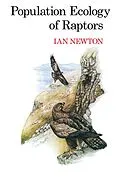Dr Newton's book is concerned with all aspects of population regulation in diurnal birds of prey, their social behaviour, dispersion, numbers, movements, breeding and mortality. He has drawn on his own studies in Scotland and on material and investigations worldwide to produce an authoritative and stimulating synthesis of current thinking and research on the ecological problems of the Falconiformes. He also deals in detail with the effects of pesticides and other pollutants on these birds, and with their scientific management and conservation. The author's lucid style will ensure a wide readership among research workers and the more general audience with an interest in birds of prey. There is a full bibliography and an extensive appendix of tables.
Autorentext
As a boy in a Derbyshire village, Ian Newton discovered his first sparrowhawk nest and so began a continuing fascination with this relatively common but often elusive bird of prey. Many years later as a scientist with the Nature Conservancy Council he embarked on a 14-year study of the species in two areas of southwest Scotland, attempting each year to trap and ring all sparrowhawks present and to find all of their nests. As a result many individuals were closely studied throughout their lives.
Inhalt
Introduction
1 Relationship between the sexes
2 Dispersion
3 Breeding density
4 Winter density
5 Problems concerning nest-sites
6 Breeding seasons
7 Breeding strategies
8 Breeding rates
9 Behaviour in the breeding season
10 Fidelity to breeding areas
11 Movements
12 Mortality
13 Human persecution
14 DDT and other organo-chlorines
15 Other pollutions and pesticides
16 Conservation management
17 Breeding from captive birds
18 Conclusions
Bibliography
Scientific names of raptors
Tables 1-68
